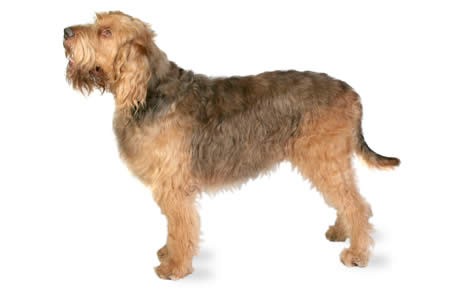Otterhound Breed Guide

Breed Group:
Hound Dogs
Get 30% off
Join our Newsletter
Sign Up Today
Otterhound Background Information & History
Originating from England, the Otterhound is an old breed that is believed to be a descendant of the Bloodhound. Even though this breed is unpopular in the United States today, these dogs have been around in Europe for almost 500 years.
Back in the day, the Otterhound served as a hunter, excelling at catching and killing otters for local Englishmen. Otter hunting was actually considered a sport for nobility, which required scent hounds to do the job. Due to their water-resistant coat, webbed-feet, and large size, the Otterhound was an excellent choice.
Once otter hunting became illegal, the Otterhound became popular among royalty and the nobility. For most of their existence, this breed stayed in England until they were brought to the United States in 1900.
Otterhound Temperament & Personality
Affectionate, determined, and clownish, the Otterhound is a versatile breed perfect for any active family. These dogs enjoy human companionship, however, they are not overly needy or require constant attention.
When mentioning the Otterhound, it’s important to note that these dogs are fairly independent, which can make training efforts a challenge. At the end of the day, the Otterhound is great for any kind of household as long as they have loving and energetic owners.
Otterhound Training Tips
As said before, the Otterhound tends to have some independent qualities. Although they may need a little extra attention when it comes time for training, it is not an impossible goal to achieve. Professionals recommend starting the dog training process as young as possible so they develop proper behavior from an early age. For inexperienced owners, try enrolling your Otterhound dog in a puppy training course. This will help to socialize your pet so he becomes comfortable with unfamiliar people, places, experiences, and sounds.
Exercise Needs of Otterhound
The Otterhound has lots of stamina and energy, which requires a decent amount of physical activity on a daily basis. A walk around the block or a quick game of fetch will not suffice for this breed.
Expect to walk your Otterhound for at least an hour or go on a thorough run daily to keep him both happy and healthy. If your Otterhound does not get the exercise he needs, he will begin to entertain himself by developing bad behaviors around the house.
Otterhound Lifespan
The average lifespan of the Otterhound is between 10 to 12 years old.
Otterhound Breed Popularity
The Otterhound is not a common breed found in America. As of right now, they are ranked as the 166th most popular breed in the United States by the American Kennel Club.
Feeding Requirements for Otterhounds
The Otterhound requires 3 to 4 ½ cups of high-quality food a day, split into two separate meals. Keep in mind that this may vary depending on the dog’s size, metabolism, age, and activity level. For a more specific feeding regimen for your pet, consult with your veterinarian.
Otterhound Grooming
With an extended snout and a shaggy coat, the Otterhound has a very distinctive look that gives them their signature charm. The thick double coat of this breed should be brushed at least twice a week to prevent tangles and matting.
Since this scruffy coat is prone to getting dirty, the dog should be bathed regularly as well. Along with regular dog coat grooming, the Otterhound should have their nails trimmed and teeth brushed frequently. Also be sure to check this breed’s ears, eyes, and nose for any sign of infection.
Are Otterhounds Good With Kids?
The friendly personality of the Otterhound pairs perfectly with children. However, due to their bulky size, these dogs may be too overbearing for small toddlers and could easily knock them over. Just like with any pet, make sure a parent is always present to supervise any interactions between your Otterhound and child.
Common Otterhound Health Problems
The Otterhound is a relatively healthy breed, however, they are still prone to several canine health complications. Otterhound health problems may include the following:
Hip Dysplasia: Hip dysplasia in dogs is a common health problem that affects all breeds. This inherited disease occurs when the thigh bone no longer fits properly with the hip joint. Hip dysplasia can lead to pain, lameness, and eventually arthritis in severe cases.
Canine Idiopathic Thrombocytopenia (CIT): This condition is an immune system disorder that results when the body cannot produce enough platelets. Although it can be hard to diagnose, CIT’s usual symptoms include bleeding under the skin and gums.
Epilepsy: Canine epilepsy is the number one cause of seizures in dogs and is one of the many health concerns for the Otterhound breed. Epilepsy can be caused by a number of different problems such as brain tumors, trauma, or toxins.
Other Resources
National Breed Website: Otterhound Club of America
Otterhound Rescue: Otterhound Club of America Rescue
